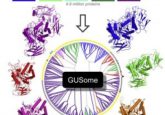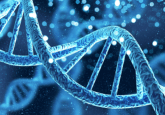Nature’s own CRISPR off-switch

CRISPR/Cas9 provides the power to generate super crops and the potential for personalized cures. Now an unexpected discovery offers even better control of CRISPR activity inside of the cell.

Naturally encoded CRISPR/Cas9 inhibitors efficiently block genome editing in cultured human cells providing a much needed “off-switch” (1).
Named Science Magazine’s 2015 Breakthrough of the Year, the CRISPR/Cas9 genome editing system has taken the biotechnology world by storm. CRISPR/Cas9—a technology derived from a naturally occurring system that bacteria use to protect themselves against viruses—can specifically cut and edit almost any DNA sequence. It is now widely used in basic research, agriculture, biotechnology, and medicine.
To be therapeutically and environmentally safe, however, researchers need to rein in off-target effects from extended Cas9 activity that can cause unintended mutations. Although methods to turn on Cas9 activity using light or drugs have been developed for containing the enzyme’s activity in a specific tissue or for a limited amount of time, precisely shutting down Cas9 is not as easy. Now, a new study in Cell describes naturally occurring anti-CRISPRs that selectively turn Cas9 off (1).
“We definitely never set out to find anything that would be modulating some Cas9 technology. We were just very interested in the basic biology of how these things work in nature,” said April Pawluk, first author of the study.
Together with colleagues in Alan Davidson’s group at the University of Toronto, Pawluk unexpectedly discovered naturally encoded anti-CRISPR proteins in phages in 2013 (2). These anti-CRISPRS targeted the type I CRISPR-Cas system, which requires large, multi-protein complexes, making them ineffective for biotechnological applications.
The team suspected that phages would also carry anti-CRISPR proteins targeting the Type II CRISPR/Cas9 system researchers use for gene editing and that these might prove advantageous for controlling CRISPR activity in cells. To find them, Pawluk teamed up with Karen Maxwell at the University of Toronto and Erik Sontheimer from the University of Massachusetts Medical School.
Using BLAST searches, the team identified other potential anti-CRISPR proteins and then tested whether these could inhibit type II CRISPR/Cas9 activity in the bacterial strain Neisseria meningitidis. They found three new proteins that prevented DNA cleavage by interacting with Cas9 and tested them in mammalian cells.
“There are always issues with expressing bacterial proteins in mammalian cells, or vice versa. The fact that all of the inhibitors that we found worked so efficiently in human cells—they got in the nucleus, they did everything—that was surprising to me,” said Pawluk.
Vikram Pattanayak from Brigham and Women’s Hospital, who was not associated with this study, is particularly excited about the new anti-CRISPRs. “It could be a very powerful tool,” he said. “It makes you wonder about what else could be out there if you can figure out where to look.”





